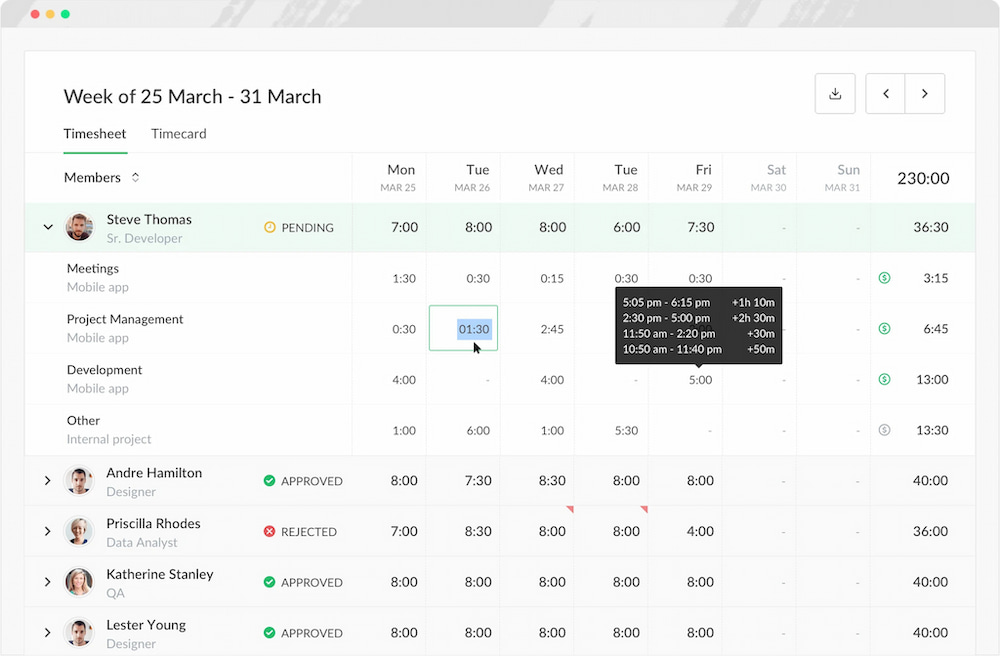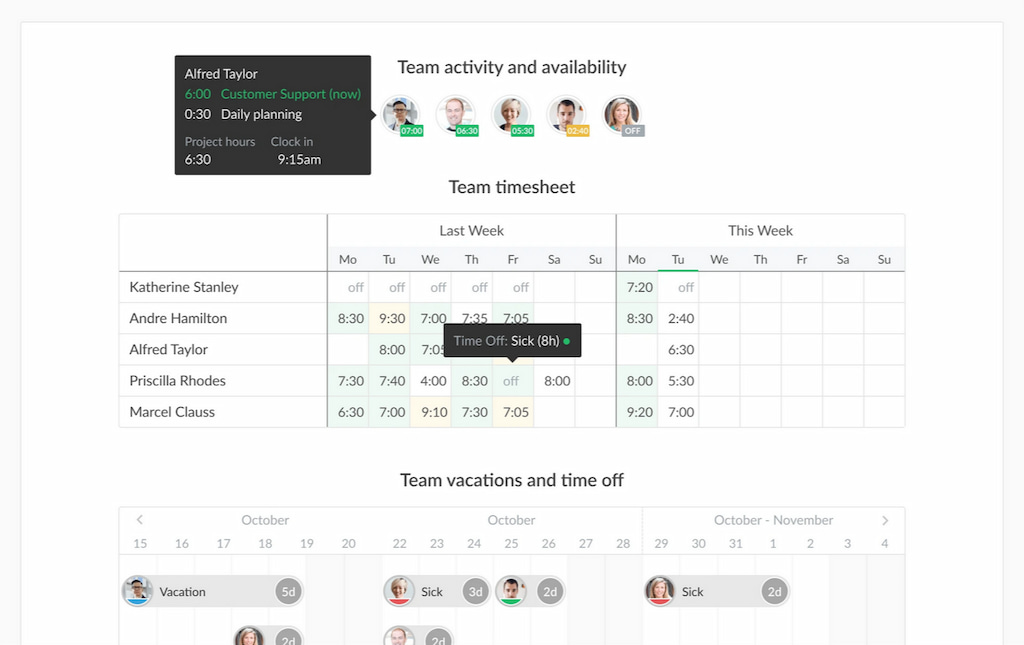Time tracking isn’t about spying on your team—it’s about clarity, accountability, and better business decisions. But that message often gets lost when employees hear “tracking.” Instead of embracing the benefits, teams worry about surveillance, pressure, and micromanagement. If you’ve ever tried to implement a time tracker and got pushback, you’re not alone. This article covers how to introduce time tracking without the revolt by building trust, avoiding backlash, and showing the real value behind tracking.
❓ The Root of the Resistance
🧠 Before jumping into solutions, take a moment to understand why time tracking often gets pushback. Resistance usually comes from:
- 🔍 Fear of being micromanaged: Employees may worry that time tracking will lead to unnecessary scrutiny.
- ⚠️ Worries about job security: Some fear their work habits could be misinterpreted and used against them.
- 🗣️ Unclear communication from leadership: When the purpose of tracking isn’t communicated clearly, people assume the worst.
- 🔒 Lack of transparency around data use: Uncertainty about how time data will be used can breed distrust.
When teams feel like tracking time is about control instead of collaboration, resistance is inevitable.
💡 1. Frame Time Tracking as a Benefit, Not a Burden
The conversation around time tracking use cases should shift from surveillance to support.
✅ What to say
Help your team see the why behind tracking:
- 💬 “We want to prevent burnout by better understanding workloads.”
- 📅 “We’re looking for ways to improve project planning and avoid overpromising.”
- 📈 “We need accurate data so we can grow sustainably and hire when needed.”
🚫 What to avoid
Steer clear of language that feels punitive or controlling:
- 🕵️ “We need to make sure everyone is working.”
- 📊 “Leadership wants to track performance more closely.”
🔄 Reframing time tracking from compliance to empowerment lowers resistance. One product team even rebranded it as “project health monitoring”—and saw participation rise significantly.
🧭 2. Lead by Example
If managers and leadership don’t track their time, why should the team? When higher-ups actively log their time and are open about how it’s helping them, it sets a tone of shared accountability.
📌 How to lead well:
- ⏱️ Track your own time first
- 📤 Share your data during team reviews
- 🧩 Be honest about where improvements are needed
👀 Modeling the behavior you want to see goes further than any policy.
🛠️ 3. Choose a Tool That Feels Seamless
Clunky time trackers feel like a chore. To avoid friction, use a tool like Everhour, which integrates with the platforms teams already use, like:

Everhour’s simple browser extension and in-app timers make tracking intuitive and non-disruptive. Integration means fewer clicks, less switching, and a more natural workflow.
“We use Everhour on a daily basis, to record all our time spent on all projects we work on, from finance and accounting to design and developing of products for our clients. It’s simple enough to be usable quickly and easily by everyone in our company.” [Rui Rodrigues, Trust Radius]
Learn how time tracking can help your strategic growth and reduce your costs!
🌱 4. Start Small, Then Expand
You don’t need to track every second from day one. Begin with one project or team, then gradually scale as people get more comfortable.
🔁 How to ease in:
- 🧪 Pilot with one department
- 🪁 Choose a low-stakes project
- 📬 Gather feedback after a week
This approach helps you catch issues early and collect success stories to inspire wider adoption. One marketing team piloted Everhour for a single campaign—and saw a 15% improvement in delivery accuracy within two weeks.
📊 5. Make Data Visible and Useful
If people track time but never see the results, the whole process can feel pointless. Show how the data actually drives decisions:
🔍 What to share:
- 🧠 Visualize team workloads
- 📏 Compare planned vs. actual hours
- 📆 Improve scoping and deadlines
- 🔄 Adjust resource allocation

Use case:
One creative agency realized their designers were constantly overbooked. Time tracking revealed a gap between assigned hours and actual availability. They used Everhour reports to justify hiring another designer—solving the problem with data, not guesswork.
❤️ 6. Make It About Team Health, Not Control
Frame time tracking as part of a wellness and support strategy, not surveillance. When you understand where time goes, you can:
🧘 What it enables:
- 🔥 Prevent burnout
- 🕰️ Set realistic timelines
- 🎯 Improve focus
- 🎉 Celebrate wins
Example:
A software company discovered that 30% of their developers’ time was lost to unclear handoffs. Time tracking helped them redesign sprint planning—reducing stress and boosting collaboration.
🎛️ 7. Give People Autonomy
Let employees control how they log their time to reduce friction and boost engagement:
🔧 Options to offer:
- ⏳ Use manual entry or timers
- 🗂️ Log by task, project, or category
- 🧩 Group small tasks together
This flexibility lowers anxiety and increases compliance. The more control people have, the more likely they are to participate willingly.
🔐 8. Address Privacy and Trust Concerns
Be open and transparent to build trust around time tracking:
📢 What to share:
- 📝 What data is collected
- 👀 Who sees what
- ⚙️ How data is used (e.g., for planning, not penalties)
Avoid invasive features like screenshots or mouse tracking. Tools like Everhour prioritize trust over surveillance, helping employees feel respected, not monitored.
🔄 9. Reinforce the Value Regularly
People can forget why they’re tracking time. Keep its importance top of mind by:
📈 Ways to reinforce:
- ✔️ Show how tracking improved estimates
- 📊 Share reports during team meetings
- 🎉 Celebrate better delivery rates or reduced overtime
Help your team see the clear cause-and-effect between tracking and the outcomes they care about.
🗣️ 10. Keep the Feedback Loop Open
Don’t treat implementation as a one-time event. Ask for feedback regularly:
💬 Key questions to ask:
- 🛠️ Is the tool easy to use?
- 📊 Are people seeing value?
- ⚠️ Any frustrations?
Use this feedback to improve the process and show that team input truly matters. Regular check-ins demonstrate your willingness to adjust based on real experiences.
What Real Teams Are Saying
“Everhour is being used by my department now, but it’s planned to be used across the whole company. We were having problems to track the times of every project and Everhour ended up being the best solution to the issue. We’re tracking our tasks involved in every project, in every level (software development, meetings, project management, etc.)” [María Lucía Santagata, Trust Radius]
“We use Everhour across our entire organization for time tracking. Not only do we use it for tracking client billable work, but we also use it for our internal projects and almost everything we do, so we can analyze how we spend our time and find ways to make everything more efficient. The integration with Basecamp is the most important feature for us.” [Tim Hebel, Trust Radius]
“It is easy to integrate with other time-tracking and project/task management apps, but it can be used alone as well and works excellent, with all the editing and reporting possibilities one would expect.” [Luis R., G2]
Final Thoughts: Time Tracking Without the Revolt: How to Get Team Buy-In
Getting buy-in isn’t about mandates—it’s about shared belief. When your team understands that time tracking isn’t about catching them slacking but about helping them succeed, they’ll get on board.
And with the best tools that the time tracking software market has to offer, such as Everhour, the process doesn’t have to feel like surveillance. It can feel like clarity, transparency, and a smarter way to work.
Wondering if time tracking is micromanagement? Learn how it can build trust—not control—when done right.

